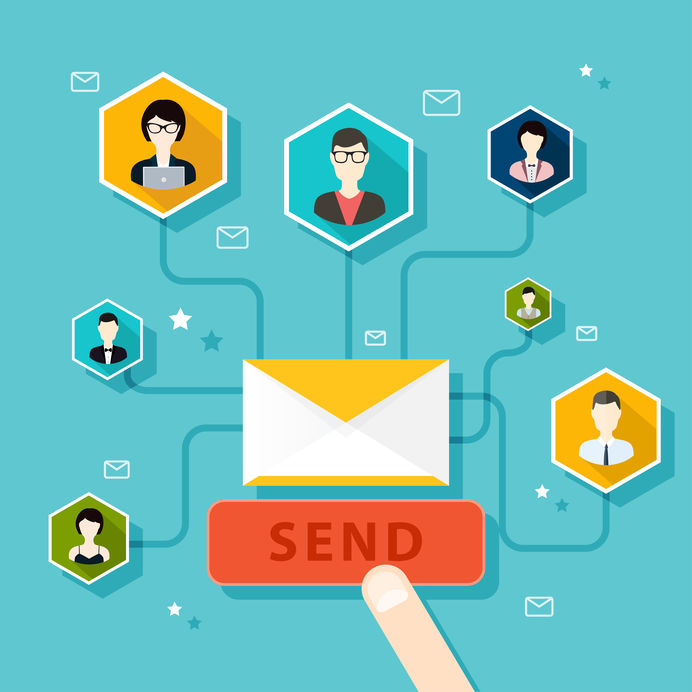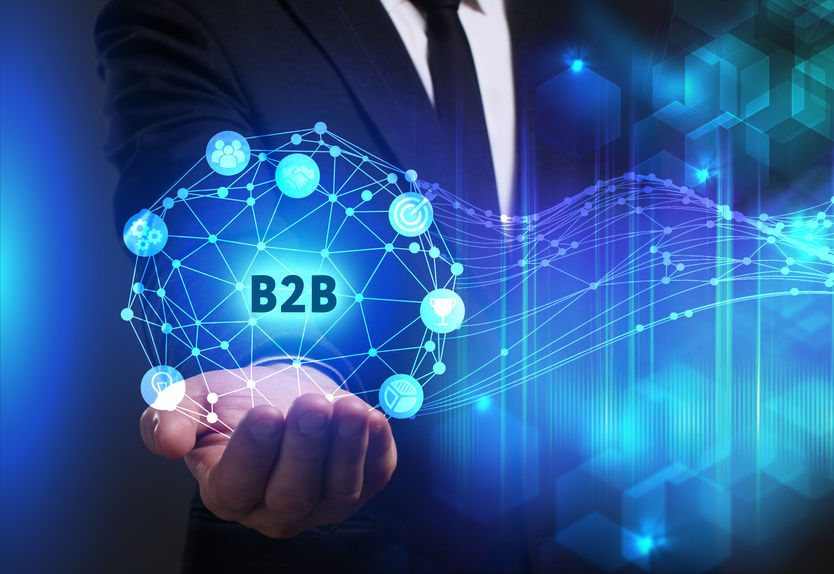As we get closer to 2020, the question that looms ahead is this – will B2B lead generation strategies that worked in 2018-19 still hold strong in 2020 as well? Or will marketers and brands need to reevaluate and restructure their lead generation game plan to stay competitive in the industry.
The reason for a yearly reevaluation is necessary for the simple reason that markets and B2B sales are constantly changing amidst new and emerging technologies, greater and in-depth market intelligence, as well as evolving consumer behavior.
All of these changes are happening at breakneck speeds. And while recalibrating your B2B lead generation strategies can be challenging, the fact remains that if you are not on speed with these changes, staying relevant in your market space will be that much more difficult.
So even though predicting what’s going to trend in the future can be difficult give the changing landscape of B2B sales and B2B lead generation, there are a few trends which have picked up steam and there is every indication that these trends will dominate the B2B market in the coming year.
If you can master these strategies in the present, then getting ahead of the sales pack will be a lot less challenging in the coming year.
Why you should be focusing on the future?
 Let’s not forget, that today’s breed of B2B buyers emerge from a pool of highly educated and aware consumers. They actively seek out information at every step of their buying journey. In addition, tech innovations have further enhanced buyer expectations when it comes to experiencing your brand at multiple points of interaction.
Let’s not forget, that today’s breed of B2B buyers emerge from a pool of highly educated and aware consumers. They actively seek out information at every step of their buying journey. In addition, tech innovations have further enhanced buyer expectations when it comes to experiencing your brand at multiple points of interaction.
In fact, according to Walker Information, a customer intelligence firm – customer experience is expected to take over price and product as a key brand differentiator in 2020.
If you are still wondering whether or not you need to set aside some time to reevaluate your B2B lead generation strategies, consider these other important stats.
- 31% of sales reps say that engaging multiple decision makers across the B2B buyer making process is now more difficult than it was just 2-3 years ago. (Source)
- 61% of marketers say generating traffic and leads is their top challenge. (Source)
- 80% of new leads fail to convert into sales. (Source)
- Companies that can master their lead-nurturing, can effectively generate 50% more sales-ready leads at much lowered costs. (Source)
Given these challenges and facts facing your sales and marketing, planning ahead for 2020 is not only important, but it needs to be a priority. So, if you want to supercharge your lead generation for the coming year, consider the following ten lead generation strategies.
Account Based Marketing
Account-based marketing (ABM) is a high ROI strategy for B2B marketers across the board. And for good reason – brands that embrace ABM effectively generate 208% more revenue from their marketing efforts. One of the fundamental reasons why ABM works so well is because it aligns well with the account-based approach that most sales teams across business types having been following for some time now. ABM however, brings in marketing to the account-based approach.
Given how the B2B buying chain is quickly expanding to include multiple players, following an account-based approach which integrates both sales and marketing will obviously generate the best response. And if you scrutinize the growing complexities of the B2B buying process, it stands to reason that marketing and sales simply cannot exit in silos anymore.
In fact, 80% of marketers say that with an ABM program in place they are “somewhat – tightly” aligned with sales.
So, it goes to show that – only when sales and marketing align will they be able to address the common goal of generating B2B leads that convert since it paves the way for more customized and targeted interactions with potential lead prospects.
Another advantage that ABM provides is that allows B2B sales reps to effectively cross-sell and upsell to current accounts. Generating quality and highly convertible leads becomes easier with prospects with whom you already enjoy a strong relationship.
High-Quality Personalized Content
Consider these two stats:
- 47% of buyers viewed 3-5 pieces of content before engaging with a sales rep.
- Content marketing gets three times more leads than paid search advertising. (Source)
 There is no doubt, that content is king. Buyers are not only demanding highly relevant and educational content, but they are increasingly basing their decision to both interact and purchase on the kind of content a brand puts out.
There is no doubt, that content is king. Buyers are not only demanding highly relevant and educational content, but they are increasingly basing their decision to both interact and purchase on the kind of content a brand puts out.
In other words, if you want to expand your brand presence, then high quality and personalized content should be a critical B2B lead generation strategy.
Effective and high quality content can help establish your brand credibility and help you expand your reach among larger pools of B2B sales leads. This brings us to the all-important question – what kind of content should you be creating?
You want your content to establish credibility and build trust. Which means every piece of content you put out there should address common and pressing buyer queries – it should be educative, informative, and highly relevant to the needs of your target audience.
Once you win their trust and loyalty, then converting potential leads becomes easier.
Blogs are a great way of establishing brand trust and quality. In fact, 81% of B2B companies consider blog as an important content marketing tactic. So, if you can publish quality blogs at regular intervals – it displays your commitment to provide your audience with valuable content that is relevant to their needs and queries.
As indicated by the first stat, B2B buyers will view of content before making a decision to engage with a sales rep. So, the more quality content you put out at every stage of the buyer process spanning your sales funnel, higher are your chances of attracting and engaging with highly convertible leads.
LinkedIn Advertising
59% of B2B marketers are confident about generating leads for their business on LinkedIn. And if you are still wondering about LinkedIn, then consider this – 80% of B2B leads are generated via LinkedIn compared to 13% on Twitter and only 7% on Facebook. Source
Now if you are on LinkedIn, then you would’ve seen ads appearing on either side of the page. You might also have seen these ads in your personal feeds.
Given the fact that LinkedIn is the top social site for B2B lead generation and prospecting, your target users will already be predisposed to making business buying decisions which will make them more receptive to B2B product and services ads.
The prominence of LinkedIn as a top B2B and professional social site is quickly expanding and this momentum is expected to continue well into 2020 and beyond. So focusing on LinkedIn prospecting via ads that are targeted towards specific job titles and industries or companies or even targeting locations can bring in great dividends.
B2B Webinars
 As mentioned above, content is a seller. And one of the most effective tools in the B2B marketing arsenal are webinars.
As mentioned above, content is a seller. And one of the most effective tools in the B2B marketing arsenal are webinars.
So, what can webinars do for B2B lead generation? Well, you can target potential B2B sales leads using educational content or provide training for businesses. You can create webinars which effectively display your company’s leadership or excellence. And because the medium is video, it can help create personal connections.
An element of trust can be established with a potential sales lead – sufficient information can be delivered to attract and engage the lead prior to setting up a meeting with a sales rep.
Aligning Sales and Marketing
Aligning of sales and marketing is increasingly becoming a major aspect of effective B2B lead generation and B2B marketing. And while ABM has definitely put the spotlight on the need for sales and marketing collaborations, the fact is that effective lead generation can only happen when both sales and marketing are on the same page at every stage of the buyer process.
 It is important for marketing and sales to align their client intelligence and expertise to develop effective lead generation strategies across multiple channels.
It is important for marketing and sales to align their client intelligence and expertise to develop effective lead generation strategies across multiple channels.
Collaborative brainstorming between marketing and sales can be highly effective in selecting ideas that can be of interest to potential leads as well as in identifying areas that can be stumbling blocks in the buying process.
Once you know what could be of interest to potential clients or their pain points, crafting and building effective marketing messages and other gated assets becomes easier. The transition from consuming content to the stage of sales engagement becomes seamless.
Sales reps that work closely with marketing can approach potential B2B sales leads from a position of strength – in addition to crucial client information, sales reps will be able to customize their outreach thereby boosting conversions.
Thought Leadership Marketing
Expanding on the earlier point of creating highly quality content as a means of establishing brand credibility and trust is the concept of “thought leadership marketing.”
Thought leadership in the words of Katie Martell – “represents the expertise your organization will bring to the table besides a great product or customer experience. It indicates to a B2B buyer that you’ll deliver more value beyond the goods and services they’re purchasing.”
According to a study from Economics Intelligence Unit – 56% of B2B marketing executives are of the opinion that positioning their company as a thought leader is a top objective. (Source)
Why does this matter?
The need for thought leadership today more than ever, has become important in face of the deep trust deficit which exists between customers and brands.
Customers are extremely skeptical about what brands put out in the name of content – they want information that is relevant to them. What they don’t want is propaganda or blatant brand promotions.
However, though leadership can be a highly effective component of your B2B content marketing strategy given the complexity of the decision making process in the B2B buyer process which includes the time it takes for decisions to be made and role of multiple players in the buying process involved.
In addition, potential sales leads will scour the web, social, and any other source they can get their hands on while collecting information about products and services of interest. So, while information is widely available, what customers also want is expertise and industry specific information from trustworthy sources.
This is where thought leadership comes in – it’s about creating an expert voice in a space that is otherwise crowded in a way that helps potential B2B sales leads differentiate between industry specific content expertise and generic content.
B2B Email Marketing
 Email marketing and InMail are highly effective mediums of starting conversations with potential B2B sales leads. Email marketing can deliver fantastic returns vis-à-vis customer engagement. In fact, 82% of B2B and B2C companies use email marketing technology to connect with target customers.
Email marketing and InMail are highly effective mediums of starting conversations with potential B2B sales leads. Email marketing can deliver fantastic returns vis-à-vis customer engagement. In fact, 82% of B2B and B2C companies use email marketing technology to connect with target customers.
InMail messages on the other hand can prove to be highly effective considering it can be used to target specific leads or connections who are most relevant to your business. And because the inbox is highly exclusive, the visibility potential of your messages increases substantially!
Related Article –Why Inside Sales is Important to B2B Sales Organizations
B2B Video Marketing
According to a LinkedIn survey – 62% of B2B companies said that video was highly effective for driving brand awareness. (Source). It is expected that by 2022, online videos will constitute for more than 82% of all consumer internet traffic. (Cisco)
A substantial chunk of B2B buyers consume video content during the purchase journey. Furthermore, 59% of decision makers in a company say that they prefer watching a video over reading an article or blog post.
Videos thus can be used to make a potential B2B sales lead receptive to your marketing – prior to their interactions with sales reps.
How do you use video for effective B2B lead generation? There are several options present. You can include a video in your initial email – this can help build a personal connection at the first point of brand contact.
You can also use videos to deliver educational or information on products/services on LinkedIn or create videos of customer testimonials.
The Ever Expanding Role of Social Media in B2B Lead Generation
55% of B2B buyers say they search for product/vendor information on social media.
Social has become integral to brand marketing and customer engagement. B2B lead generation stands to gain much from social marketing.
B2B buyers research about you everywhere – including on social. In fact, 75% of B2B buyers and 84% of C-level or vice-president level executives use social media to make purchasing decisions
However, while both B2B and B2C marketing are becoming heavily dependent on social – there is a distinction to be made between the two. When it comes to B2B social marketing, the quantity of relationships is of lesser significance compared to the quality of relationship.
 So, while in B2C social is all about brand engagement, when it comes to B2B marketing, the end goal is always to engage with the buyer on social in a manner that they feel compelled to engage with the company to find a solution to their problem.
So, while in B2C social is all about brand engagement, when it comes to B2B marketing, the end goal is always to engage with the buyer on social in a manner that they feel compelled to engage with the company to find a solution to their problem.
Here are a few things to keep in mind:
- Craft your social media strategy carefully with a specific focus on your operational activity to deliver best results on your strategy.
- Monitor social conversations around your company as well as competitors prior to starting conversations or engaging with potential B2B sales leads.
- Don’t focus on accumulating fans or followers.
- Identify social channels that are best suited for your business and your audience. LinkedIn and Twitter for example are the top social channels for B2B lead generation and B2B marketing.
Robust Marketing Automation
Implementing a robust marketing automation program takes time. However, by going ahead and implementing marketing automation and taking the right steps, you can give your B2B lead generation a boost as soon as you step into 2020.
Four steps to marketing automation:
- Identify and evaluate the best marketing automation program for your business – based on aspects such as your business requirements, time and budget, time and ease of integration, as well as customer support.
- Be clear about what to expect – this includes setting up of the platform, onboarding, migration of campaigns, and campaign development.
- Determine your go-live timeline and critical milestones – this of course will be specific to the solution you choose and your business requirements.
- Launching of your first campaigns – lead generation for your campaign will be subject to your content and message, quality of your list, as well as CTA.
AI in B2B Lead Generation
If we are talking about marketing automation, then the role of AI in B2B lead generation cannot be ignored. Here’s why: a Salesforce’s 2016 Connected Customer report states that by 2020, 57% of B2B buyers expect that companies anticipate their needs and expectations. If a company does not meet this critical requirement, then they will have no qualms about moving to their competitors! (Source)
So B2B organization need to get moving with their plans about implementing big data and machine learning within their operations.
So how can AI help with lead generation? Consider this – it takes hundreds of manpower hours to source new B2B leads, to find their contact info from a variety of sources such as company sites or LinkedIn.
However, AI can effectively speed up the gathering of customer data for lead generation while also analyzing unstructured customer data including phone calls and emails, as well as social activity to identify patterns which can help define potential sales leads.
In addition, AI technology can be leveraged to automate recommendation of products based on customer preferences and interests.
Getting Ready for 2020
Technology advancements are fueling changes in B2B customer behavior and expectations. And while critical aspects of B2B lead generation and sales such as engaging and building robust customer relationships will continue to hold their importance, the strategies that we use to enable relationship building will continue to evolve with time.
B2B organizations and B2B sales reps will need to quickly adopt these evolving strategies and align them with changing customer expectations if they want to stay ahead of the competition.
Ready to sell smarter?
SalesPro Leads offers industry leading B2B Lead Generation and Appointment Setting services that provide sales intelligence to super-charge your sales team.




1 Comment.
[…] we’ll take a basic look at conducting a lead generation analysis, to help you optimize your lead generation process, campaigns and […]